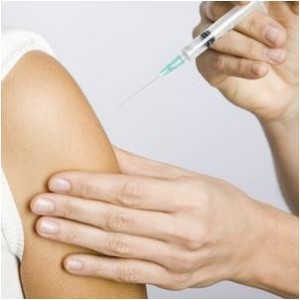 What’s the worst part of getting a shot? The needle of course! Given the choice between an injection and a pill, just about everyone would opt for the latter. Not only do shots hurt, but they can leave unsightly bruises that last for days, especially in older people. Of course, injections aren’t administered because they’re fun, but because they’re necessary. There are some drugs, specifically those that are made from large proteins, that simply cannot be given in pill form. That is because the these larger proteins are destroyed in the stomach before they can make their way into a person’s bloodstream. Fortunately, new research from the Massachusetts Institute of Technology may allow for the creation of orally ingested drugs that deliver their payloads with the same efficiency as an injection without the pain of a shot.
What’s the worst part of getting a shot? The needle of course! Given the choice between an injection and a pill, just about everyone would opt for the latter. Not only do shots hurt, but they can leave unsightly bruises that last for days, especially in older people. Of course, injections aren’t administered because they’re fun, but because they’re necessary. There are some drugs, specifically those that are made from large proteins, that simply cannot be given in pill form. That is because the these larger proteins are destroyed in the stomach before they can make their way into a person’s bloodstream. Fortunately, new research from the Massachusetts Institute of Technology may allow for the creation of orally ingested drugs that deliver their payloads with the same efficiency as an injection without the pain of a shot.
Taking a shot to the gut
The secret behind this new innovation is a series of tiny needles that can inject drugs directly into the gastrointestinal tract of a patient. While that might sound even more painful than a shot to the arm, the needles are so small that they do not cause any actual damage to the patient, and since there are no nerves in the GI tract, the patient doesn’t feel a thing. More importantly, the drug capsule can deliver drugs that would otherwise be destroyed in the stomach just as efficiently as an injection.
Essentially, the delivery system works by storing the drug at the center of a capsule, the core of which is linked to several tiny injection needles. The tips of the needles are hidden beneath a coating of digestible material that breaks down in the GI. As the coating is digested, the tips of the needles emerge. With a bit of clever engineering and knowledge of human anatomy, the material dissolves just as the capsule enters the GI to maximize the efficiency of the delivery system.
Successful delivery
The new oral shot has not yet been given to human subjects, but the researchers were able to test it on pigs. When the pigs were given insulin with the device, a drug which is normally destroyed in the stomach, the researchers found that the capsules successfully delivered their payloads. Since the new device worked with insulin, the researchers believe that the capsules could also deliver any other large biopharmaceuticals, such as antibodies, or biologics, like vaccines and recombinant DNA.
Passing the pill
Unfortunately, the pills took nearly a week to move through the pigs’ digestive system, and while the pigs were unharmed, the process of passing multiple capsules could be problematic. A potential solution, according to the MIT press release, would be to create the capsules out of entirely digestible material, including the needles. Early speculation seems to indicate that polymers could be used to fabricate needles that could deliver their payload and then dissolve in the digestive tract.
That, however, is a design problem. Digestible plastics have been around for a while, but most of the work in this field has been in creating things like casings for pills or wrapping for food, which can be soft and pliable. A recent article in the Journal of Polymers focused exclusively on digestible polymers, and the different methods that can be used to fabricate this less than appetizing edible.
Finding a digestible solution
According to the journal, there are four varieties of edible plastics: hydrocolloids, polypeptides, lipids and synthetic or composite edible polymers. Hydrocolloids are often made of vegetable, animal, microbial or synthetic materials. These are things like starch, gum arabic, pectin and xanthan gum, but these materials are not known for their rigidity, making them not the best candidate for needles. Polypeptides are made from proteins, and are often used for protecting food. They can carry antimicrobial agents, but are similarly soft and, in most cases, squishy. Lipids, such as paraffin wax and beeswax, are not viable choices for constructing needles because they lack the necessary structural integrity.
If MIT’s edible injection is going to find a viable digestible plastic, it will likely be in the form of a synthetic or composite edible polymer. These materials combine various naturally occurring polymers to capitalize on the unique attributes of each. The journal highlights recent work done to create heterogenous films that are used to seal food products and can be applied in layers.
A balancing act
With the right pattern of layers and composition of polymers, it might be possible to create a digestible plastic that is rigid enough to be sharpened to a point and function as a needle. However, this is a goal for materials scientists, who will have to be able to balance all of the factors of digestibility, rigidity and the ability to deliver large protein-based drugs that would otherwise be destroyed by stomach acids.
There may be some work to do, but with a bit of innovative polymeric research, shots may soon be a thing of the past!
